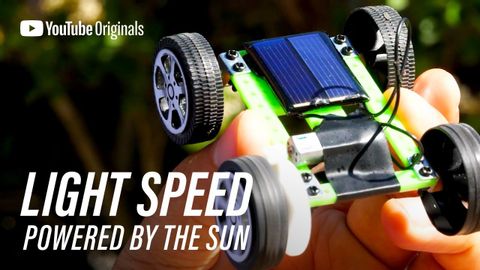太陽能賽車的引擎蓋下 (Under the Hood of a Solar Race Car)
 沒有此條件下的單字
沒有此條件下的單字US /səˈfɪstɪˌketɪd/
・
UK /səˈfɪstɪkeɪtɪd/
- adj.老於世故的;精緻的:富有經驗的
- v.t.老於世故的人
US /ɪˈlɪməˌnet/
・
UK /ɪ'lɪmɪneɪt/
US /ˈdɛmənˌstret/
・
UK /'demənstreɪt/
- v.t./i.顯示;表露;遊行;演示;證實; 展示
US /ˈpriviəs/
・
UK /ˈpri:viəs/
- adj.先前的;以往的;前一個的
- n.上一個
- adv.先前地
